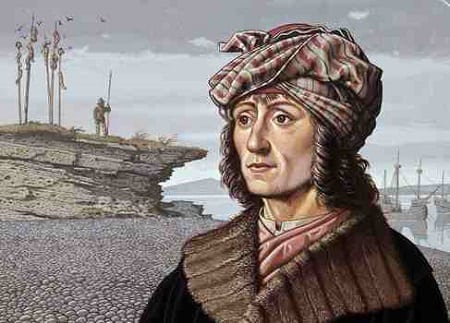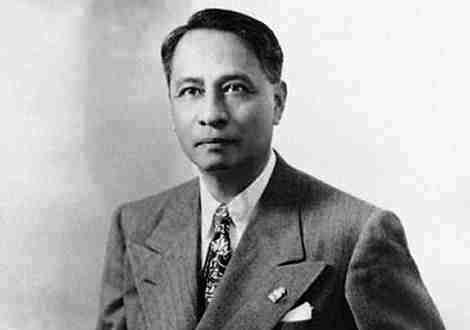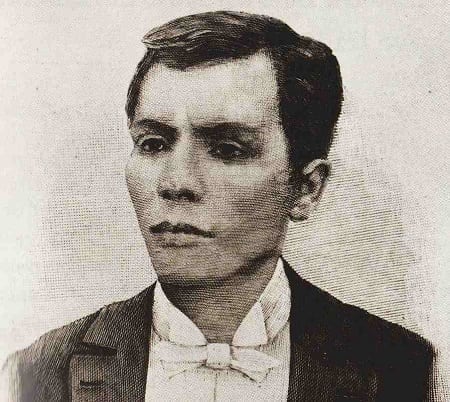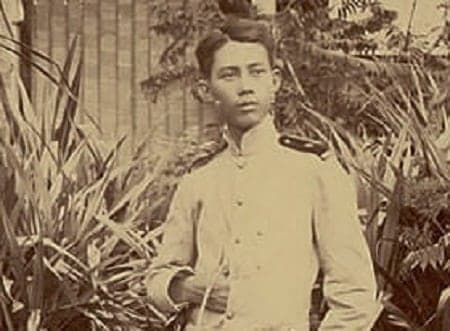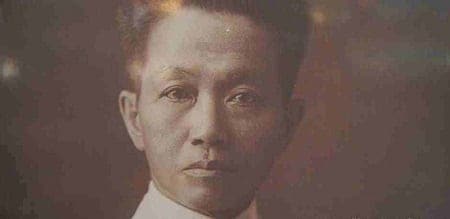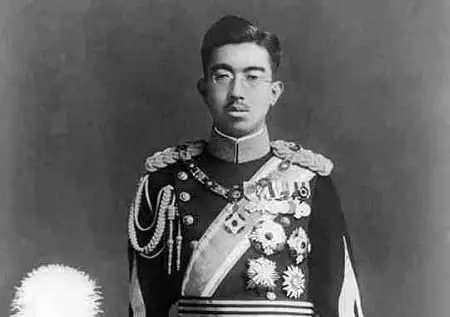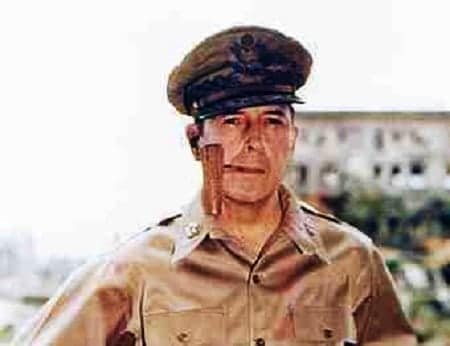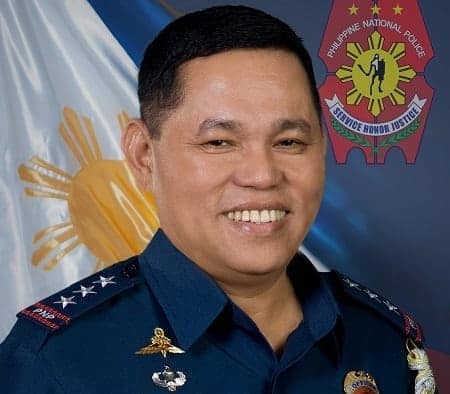10 Near-Deaths That Almost Changed Philippine History
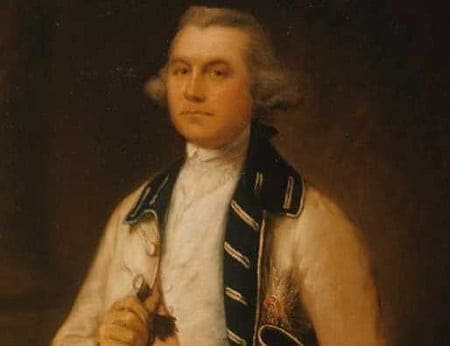
History is not only made up of the concrete events which actually happened, but also that of “what-ifs.” It is also often influenced by a single individual who rose up from blanket obscurity to do something worth remembering.
READ: 10 ‘What If’ Scenarios That Would Have Changed Philippine History Forever
Now, let us imagine what would’ve happened had these famous individuals who make up a part of Philippine history die a premature death.
10. William Draper
William Draper led the British in conquering Manila in 1762, placing the city under English hands for two years. What most people don’t know, however, is that Draper nearly died at the hands of a Filipino.
Also Read: The British invasion of Manila (1762-1764)
Jose Manalastas, a Pampango, led his men in a fierce counterattack one week after the British successfully occupied Manila, fighting wildly and managing to reach the very tent of Draper himself. Inside, he engaged the British commander in a duel and even stabbed him in the chest before he was finally overwhelmed.
Draper would later praise their bravery, saying had Manalastas and his men’s bravery been equaled by the quality of their weapons (they fought with bows and spears), he would have surely died at their hands.
9. Antonio Pigafetta
We can only imagine the chronicles and accounts lost to the flow of history had Antonio Pigafetta, Ferdinand Magellan’s chronicler, also met an untimely end in the Philippines. During the Battle of Mactan, Pigafetta—unlike his captain—survived even as he took a poisoned arrow to the forehead. His injury, however, turned out to be a blessing in disguise.
READ: 5 Misconceptions in Philippine History Debunked!
As Pigafetta had to recuperate aboard the ship, he could not go to a feast prepared by Humabon for the Spaniards after their defeat. As can be recalled, the natives massacred the Spaniards who attended. In effect, Pigafetta narrowly escaped death twice in the Philippines.
8. Manuel Roxas
Aside from being saved by Jose Laurel from a Japanese firing squad, Manuel Roxas’ life was also twice saved by a Japanese officer.
Colonel Nobuhiko Jimbo became entranced with Roxas’s dignified appearance and calm disposition even as the latter was being led to his execution that he instead ordered him to be hidden in a farm in Davao. He then flew to Manila and asked for an audience with General Masaharu Homma to confirm whether he really issued an execution order.
Related Article: 10 Haunting Last Pictures Taken in Philippine History
As fate would have it, Homma never wrote the order—it was his Vice Chief-of-Staff, the hardliner General Yoshihide Hayashi, who penned the order under his superior’s name. When Jimbo flew back, he found Roxas was yet again on the verge of being executed and stopped it in the nick of time.
After the war, Roxas would pay back the favor by writing Generalissimo Chiang Kai-shek to have Jimbo—who was languishing in a Chinese prison—released, describing the man as the kind-hearted Japanese officer who saved his life.
The two men would eventually become good friends, with Roxas introducing him to his family. Incidentally, Jimbo would later return to the Philippines in 1967—this time to receive his recognition as an honorary Knight of Rizal.
7. Andres Bonifacio
Little-known is the fact that the Supremo nearly met his end during his very first battle. After laying siege to San Mateo’s municipal hall which had been barricaded by the Spanish, the Katipuneros found themselves on the receiving end of a Spanish counterattack three days later. Overwhelmed by the enemy reinforcements, a general retreat to Balara was sounded off by Bonifacio.
Also Read: 7 Interesting Facts About Andres Bonifacio
In the ensuing withdrawal, a bullet cleanly grazed Bonifacio’s collar when he shielded Emilio Jacinto from enemy fire. Fortunately, the bullet failed to hit him, allowing Bonifacio to live to fight another day.
6. Gregorio del Pilar
Just like Bonifacio, Gregorio del Pilar might have died early on during the Revolution, a nameless patriot among the mass of dead bodies on the battlefield.
Then a lieutenant at the bloody Battle of Kakarong de Sili in Bulacan, del Pilar nearly died when the bullet from a Mauser rifle grazed his forehead. However, in spite of the blood pouring out of his wound, del Pilar was said to have fought like a lion until he and his men had to retreat in the face of the overwhelming Spanish weaponry.
As fate would have it, del Pilar would live on to fight several battles until he finally met his end in the Battle of Tirad Pass.
READ: Gregorio del Pilar Died Early Due To His Own Carelessness.
5. Emilio Aguinaldo
If Emilio Aguinaldo’s childhood was any indication, he undoubtedly led a very charmed life.
At the age of two, Aguinaldo contracted smallpox and nearly died from the disease. He was even given up for dead until he finally opened his eyes. A year later, a three-year-old Aguinaldo nearly died from hundreds of ant bites after a young relative left him in a bamboo brush to escape Spanish forces out for revenge for the 1872 Cavite Mutiny. His uncle later discovered him lying helplessly on his back and screaming hoarsely, his body swollen from the ant bites.
Also Read: 7 Fascinating Facts About Emilio Aguinaldo
Aguinaldo’s third brush with death during his childhood happened when he nearly drowned at the Marulas River. The young Aguinaldo jumped into the river after being dared by a playmate only to find out he didn’t know how to swim. Fortunately, he was rescued before he could drown.
4. Emperor Hirohito
Would World War II in the Pacific (and the devastation it wrought on the Philippines) have been averted with the death of Japanese Emperor Hirohito? Hard to say, but Hirohito did have to endure one coup and two assassination attempts in the run-up to World War II.
The first assassination attempt happened when Hirohito, then the Crown Prince, was nearly hit by a bullet fired by leftist Daisuke Namba at his carriage in December 1923. In the second and more life-threatening attempt, Hirohito escaped unscathed the blast from a grenade thrown yet again at his carriage by Korean nationalist Lee Bong-chang on January 9, 1932.
Also Read: 10 Biggest Misconceptions About World War II In The Philippines
Finally, Hirohito survived a coup attempt by a group of young Japanese officers who tried but failed to secure the Imperial Palace on February 26, 1936.
3. Douglas MacArthur
While we know Douglas MacArthur made his promise to return to the Philippines even as he escaped to Australia to evade capture by the Japanese, little-known is the fact he was almost spotted (and certainly killed) three times.
Onboard the battle-scarred and slowed-down torpedo boat PT-41 with his wife and family, MacArthur’s escape was almost foiled, first by a heavy Japanese cruiser that fortunately failed to spot them even though it was 4 PM in the afternoon. A few minutes later, the PT-41 also narrowly avoided being seen by a Japanese destroyer.
Also Read: The Tragic Love Story of Gen. Douglas MacArthur and Dimples Cooper.
Later that night, as the convoy made its way through the coastline of Negros, Japanese coastal artillery heard the sound of the engines. In another stroke of luck yet again for MacArthur, the Japanese thought it was the sound of planes and so lit up the skies and not the waters with their searchlights. Thus, MacArthur safely flew to Australia, enabling him to fulfill his promise two years later.
2. Bill Clinton
Can the country ever live down the reputation as the place where a US president got killed? That ominous question nearly had its answer when US President Bill Clinton was within minutes away of prematurely meeting his Maker in the country.
Read More: Philippine police discovered clues of 9/11 attacks, 6 years before it happened
The president—who was attending the Asia-Pacific Economic Cooperation confab in Manila in 1996—and his convoy were about to pass a bridge in Central Manila where a bomb had been planted. Fortunately, intelligence services were able to find out in time to re-route the presidential convoy and disarm the bomb.
A subsequent investigation later tagged the mastermind as none other than Osama bin Laden.
1. Alan Purisima
Surprising as it may sound, we may have even never heard of Purisima today had he died as a cadet decades ago.
Then a plebe at the Philippine Military Academy in 1978, Purisima found himself the subject of hazing by his upperclassmen. On that fateful night which resulted in the death of one his classmates, Purisima himself nearly succumbed to internal bleeding after he was told to lie down and shot-put balls were repeatedly dropped on his stomach.
Recommended Article: 9 Philippine Government Agencies That Need To Reform Right Now
Doctors who later examined him in the hospital were surprised at the extent of his injuries and operated on him in the nick of time to save his life.
Selected References:
Leonard, T. (2009). Osama bin Laden came within minutes of killing Bill Clinton. The Telegraph. Retrieved 26 March 2015, from http://goo.gl/5l1K2m
Musico, J. (2014). Maragondon’s significant role in the 1896 Philippine Revolution (Special Report).Balita.ph. Retrieved 26 March 2015, from http://goo.gl/bRPCgs
The Official Gazette of the Republic of the Philippines,. Letter of President Roxas to Generalissimo Chiang Kai-shek, August 26, 1946. Retrieved 26 March 2015, from http://goo.gl/TrFQA2
Yotoko Chorengel, M. (2011). ‘Capiztahan’ celebrates Manuel Roxas & his province. Inquirer.net. Retrieved 26 March 2015, from http://goo.gl/zOu749
Additional References:
The Magellan Fallacy: Globalization and the Emergence of Asian and African Literature in Spanish by Adam Lifshey
Complete Sinawali: Filipino Double-Weapon Fighting by Reynaldo Galang
Supremo: The Story of Andres Bonifacio by Sylvia Mendez Ventura
Sitting in Darkness: Americans in the Philippines by David H. Bain
No Surrender by Hiroo Onoda
The Rising Sun: The Decline and Fall of the Japanese Empire, 1936-1945 by John Tolan
Operation Snow: How a Soviet Mole in FDR’s White House Triggered Pearl Harbor by John Koster
The Emperors of Modern Japan by Ben-Ami Shillony
Home of Independence: Emilio Aguinaldo House, Kawit, Cavite by Ino Manalo
FilipiKnow
FilipiKnow strives to ensure each article published on this website is as accurate and reliable as possible. We invite you, our reader, to take part in our mission to provide free, high-quality information for every Juan. If you think this article needs improvement, or if you have suggestions on how we can better achieve our goals, let us know by sending a message to admin at filipiknow dot net
Copyright Notice
All materials contained on this site are protected by the Republic of the Philippines copyright law and may not be reproduced, distributed, transmitted, displayed, published, or broadcast without the prior written permission of filipiknow.net or in the case of third party materials, the owner of that content. You may not alter or remove any trademark, copyright, or other notice from copies of the content. Be warned that we have already reported and helped terminate several websites and YouTube channels for blatantly stealing our content. If you wish to use filipiknow.net content for commercial purposes, such as for content syndication, etc., please contact us at legal(at)filipiknow(dot)net

